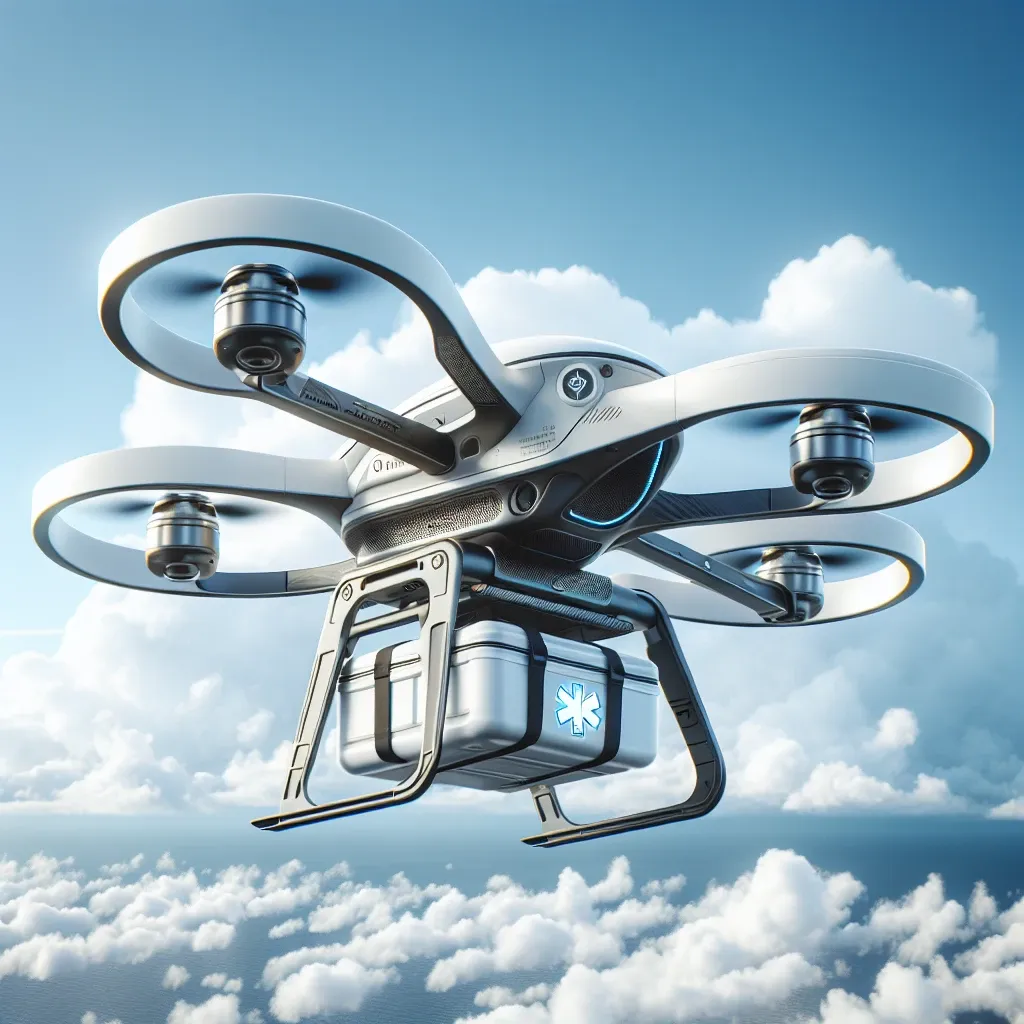Introduction
In an era where rapid response can mean the difference between life and death, DJI has made significant strides in the realm of emergency medical logistics. The company’s newly unveiled compact drone is set to change how medical supplies are delivered in critical situations. This article delves into the features, benefits, and potential impact of this groundbreaking technology.
The Need for Efficient Medical Supply Delivery
In emergencies, timely access to medical supplies is crucial. Traditional delivery methods can be hindered by traffic, geographical obstacles, or even natural disasters. As healthcare providers and first responders strive to save lives, the demand for efficient delivery systems has never been greater.
Recent Trends in Drone Technology
Over the past few years, drone technology has advanced at an astonishing pace. From recreational use to significant applications in agriculture and logistics, drones have proven their versatility. However, the integration of drones into emergency medical supply logistics stands out due to its potential to save lives.
DJI’s Compact Drone: An Overview
The new compact drone from DJI is designed specifically for emergency medical supply drops. Its lightweight design, impressive flight capabilities, and advanced navigation systems ensure that it can operate in various environments and weather conditions.
Key Features
- Compact and Lightweight: The drone’s size makes it easy to transport and deploy quickly in urgent situations.
- Long Flight Range: With a range of up to 15 km, it can reach remote locations where traditional vehicles may struggle.
- Payload Capacity: Capable of carrying essential medical supplies such as medications, blood, and equipment reliably.
- Advanced Navigation Systems: Equipped with GPS and obstacle avoidance technology to ensure safe and precise delivery.
How It Works
The operation of the drone is straightforward yet effective. Operators can program the drone to follow a predetermined route, allowing for automated delivery. Additionally, the drone can be manually controlled in complex scenarios where direct oversight is necessary.
Step-by-Step Functionality
- Preparation: Medical personnel prepare the supplies for shipment.
- Loading: Supplies are securely loaded onto the drone.
- Route Planning: Operators input the delivery coordinates into the drone’s navigation system.
- Launch: The drone takes off and begins its flight.
- Delivery: Upon reaching the destination, the drone deploys the medical supplies.
Benefits of the DJI Drone
The introduction of this compact drone offers numerous advantages for emergency medical logistics.
Efficiency and Speed
With the ability to bypass road congestion and navigate difficult terrains, the drone can deliver supplies much faster than traditional methods. This speed can be critical in situations where every second counts.
Cost-Effectiveness
While initial investments in drone technology may be considerable, the long-term savings from reduced manpower, fuel costs, and quick turnaround times can be significant.
Accessibility
Drones can reach remote or hard-to-access locations that may be challenging for ground transport, thus broadening the scope of medical care delivery.
Potential Challenges
Despite the numerous benefits, there are challenges that must be addressed for widespread adoption.
Regulatory Hurdles
Different countries have varying regulations regarding drone flights, especially for commercial use. Navigating these rules will be essential for successful implementation.
Public Perception
Education about drone safety and efficacy is necessary to gain public acceptance. Transparency in operations will help in building trust.
Case Studies and Real-Life Applications
Several organizations are already experimenting with drone delivery systems, showcasing potential applications in real-life scenarios.
Example 1: The Zipline Initiative
In countries like Rwanda and Ghana, drones have been used to deliver blood and medical supplies to remote clinics. These initiatives have proven the effectiveness of drone logistics in saving lives.
Example 2: Disaster Relief Operations
In recent natural disasters, drones have been deployed to assess damage and deliver critical supplies quickly, demonstrating the potential of aerial logistics in crisis situations.
The Future of Emergency Medical Logistics
The unveiling of DJI’s compact drone marks a significant milestone in the future of emergency medical logistics. As technology continues to evolve, we can anticipate even greater advancements and innovations that will streamline supply delivery processes.
Predictions
Experts predict that by 2030, drones could handle a significant percentage of medical supply deliveries. As regulations become more defined and technology advances, the integration of drones into everyday medical logistics may become the norm.
Conclusion
DJI’s innovative compact drone is not just a technological marvel; it represents a transformative approach to emergency medical logistics. By addressing the pressing need for efficient supply delivery, this drone has the potential to save countless lives and redefine how medical care is delivered in emergencies. The future of healthcare logistics is here, and it is airborne.
